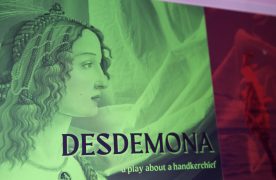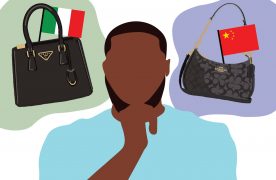When I sit down to eat dinner, there’s a particular formula my family follows. It has nothing to do with etiquette — no one expects me to eat neatly, or to keep my elbows off the table. No, it’s much more profound than that.
If I see ground turkey or beef set out on the counter to defrost, I know we’re having schnitzel — ground meat patties breaded and fried in a sauce pan. If there’s a pack of chicken breasts, we’re eating breaded cutlets with a side of mash potatoes and mizeria — a cucumber, sour cream and vinegar salad with dill on top, that night. For Christmas, it’s always the same menu: beet soup with mushroom dumplings, potato and cheese pierogi, fried carp and cabbage. The food I eat at home is entirely informed by the culture I come from. I am Polish, and that is reaffirmed regularly by the food I eat. Despite having been born here in the United States, it’s a culture I can identify with, and a culture I can connect with when I sit down to eat.
There’s a great documentary on Netflix called “Barbecue” that explores the variance in barbecuing traditions from country to country and from ethnic group to ethnic group. In all cases, barbecues bring people together — they force people to sit down and interact with their families and friends. But perhaps even more than that, each style of barbeque is specific to a certain national or ethnic identity. This allows people to connect to their traditions and to understand and appreciate their pasts as Mongolians or Australians or South Africans, no matter how distant those identities may seem.
My mom takes pride in eating Polish food. There’s one particular mantra that she always maintains — when there’s no bread in the house, there’s no food in the house. She can eat a loaf of rye and drink a glass of milk for dinner and be satisfied, because that’s how they did it on the farm in the 1960s — that’s what they had to eat when the communist government limited the amount of food each family could buy at the market.
Sometimes, she’ll go above and beyond for Polish food. She’ll drive 20 minutes to her favorite bakery in Passaic, New Jersey just for a specific kind of bread, or for her favorite Polish donuts. She’ll wait in lines two hours long before Easter to buy kielbasa, since tradition calls for kielbasa to get get blessed in church and then cut up and put in soup later that day. Though she’s an American citizen (she was naturalized a couple years ago) and has lived and worked here for 20 odd years, she is also fundamentally Polish, and with that comes indulging in her native country’s food.
She doesn’t only do it for herself, though. When my mom sends me a package, she always includes Polish candies or cookies or pretzels. When I come home from college, Polish style chicken soup is usually waiting for me. When my mom visits me and my brother, who is a chef here in Boston, she brings kielbasa for him to fry up and serve to his co-workers. We are reminded of our roots regularly, and it grounds us, in a certain respect.
Sharing food customs helps share culture, too. It helps level people, and create bonds between identities. My family regularly shares Polish food with people, and they share their food with us.
My aunt is married to an Italian-American, my uncle Mike, who always comes to our Christmas Eve dinners. For the last couple of years, Mike has brought his family along with him. They bring lasagna, pasta and eggplant parm for us, and we make pierogies, beet soup and cabbage for them. Mike’s sister Christine brings her husband Paul who is Russian-Latvian. He takes solace in our food because, for him, it hits close to home. Russian and Polish food traditions very often overlap, and so for Paul, Christmas Eve dinner is more than a dinner—it’s a harkening to his childhood and cultural traditions.
In a country that regularly and sometimes violently stresses cultural assimilation, one thing that has remained noticeably distinct is food. Part of the beauty of food is that it differs from region to region — you can make noodles or chicken or spinach a hundred different ways. By engaging in different categories of food, we are engaging in culture as a distinct entity. We are acknowledging that it has a right to be distinct, a right to exist with necessarily fusing into a colorless conglomerate with the things around it. There is value, sure, in marrying certain food cultures together (think fusion restaurants), but there is also a value in preserving foods in their respective boxes. And hopefully, that will extend to other aspects of culture too.










